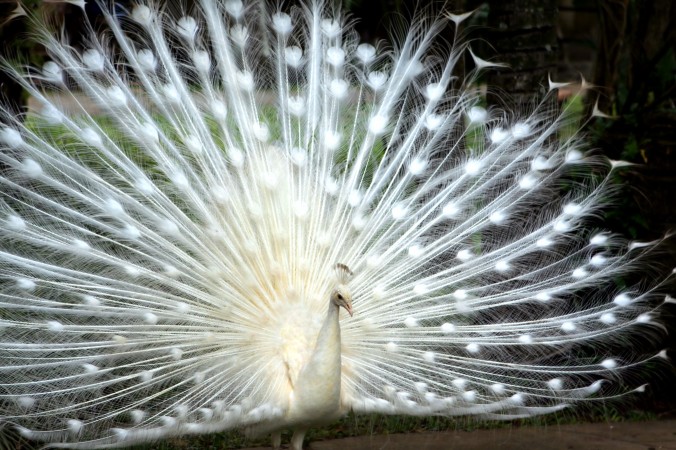As discussed here: How would a Reflecting-Oven-Jay Evolve?
The Reflecting-oven-Jay
This is a small African predatory bird with a perfectly smooth set of wings with an area of ~100 cm2, so maybe the size of a pigeon. It hunts in large flocks, around 10,000 birds to a group (there are plenty of real birds that form flocks this size). Using some basic multiplication, this flock can focus about 130 kW of sunlight. The flock decides to kill and eat an elephant, who has a metabolism of around 3000 watts and already has to work to keep cool on a warm day (heat sink ears, spraying water on self, etc). By spreading out and focusing sunlight on the elephant, the birds totally overwhelm the elephants ability to cool itself, raising its body temperature by about a degree Celsius every 2 minutes (130 kW / 4 tons*specific heat of water), leading to slow heatstroke and death. Divided evenly, there's a lb of meat for every bird in the flock, a huge windfall, sustaining the group though any cloudy days until the next kill.
Assuming it evolved as described in the answers to that question, is this actually viable?
We've seen birds self-organize into vast flocks so creating a formation should be achievable but:
How much light could an individual Jay actually concentrate into an area?
Can the flock manage to scale that up to a sufficient power to overheat the target?
Do the birds need to land and use their wings and tails as reflectors (in which case they'd need the right shaped for the land surface) or can they do this while in flight. While in flight would be ideal as it makes them considerably more terrifying.
On the bright side (all puns intended) the fact that they are doing this in an already extremely hot area and aiming at animals already coping with high temperatures does count in their favor. They don't need to raise the temperature very much.



